If you’re looking for a unique and charming way to decorate your home, look no further than Museum Bees. These adorable wall objects are the brainchild of Trace Mayer, an arts and antiques dealer trained by Sotheby’s. Mayer takes leftover framing and adds jewel-like embellishments to create one-of-a-kind pieces that are sure to impress.
What Are Museum Bees?
Museum bees are small metal replicas of bees that were originally used in natural history museums to display specimens of real bees. Today, they are mainly used for decorative purposes.
When Should You Use Museum Bees?
Museum bees can be used in a variety of settings, including:
- Living rooms
- Dining rooms
- Bedrooms
- Offices
- Libraries
- Museums
- Art galleries
They are particularly well-suited to spaces that feature other vintage or antique items.
Despite their individuality, each Museum Bee is sold at the same price, making them an accessible and affordable option for anyone looking to add some personality to their home decor. These little keepsake cuties are only 2″ to 3″ in size and are made from vintage frames and found objects, ensuring that each one is entirely unique.
Whether you’re looking for a single statement piece for your gallery wall or you want to hang them en masse for a more eclectic look, Museum Bees are a versatile addition to any home. And if you’re struggling to find the perfect gift for a friend or family member, these charming wall objects are sure to be a hit.
But how do you decorate with Museum Bees? Here are some tips to get you started.
- Gallery Wall
Create a gallery wall using Museum Bees of different shapes, sizes, and colors. Hang them in a cluster for a more eclectic look or create a pattern for a more structured feel. Use Museum Bees to add texture and depth to your gallery wall.
Read more: Impeccable Trend: Oversized Wall Art
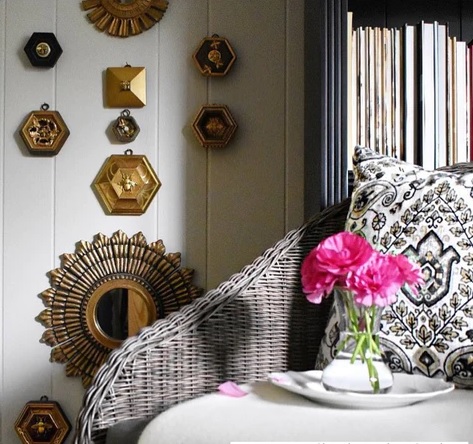
- Mix and Match
Museum Bees can be used as a statement piece on their own, but they also look great when mixed and matched with other wall décor. Hang them alongside art prints, mirrors, or other decorative objects to create a visually interesting display.
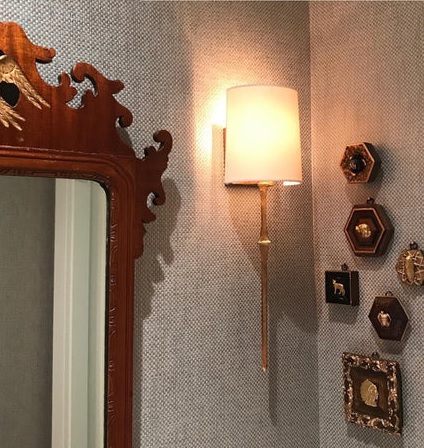
- Unique Spaces
Museum Bees can add character to any space in your home, even those that are often overlooked, like the hallway or the bathroom. Use Museum Bees to create a focal point in these areas and to add a touch of personality to otherwise mundane spaces.
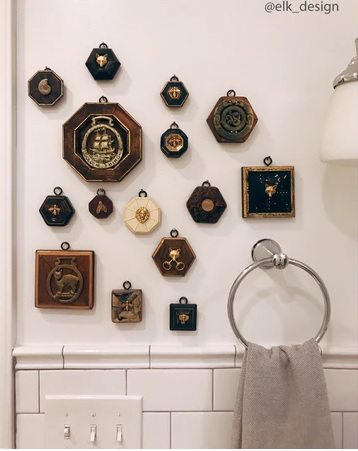
- Gift Ideas
Museum Bees make great gifts for art lovers and collectors. They are small, affordable, and unique, making them a thoughtful gift for any occasion. Whether you’re looking for a birthday present or a housewarming gift, Museum Bees are sure to impress.
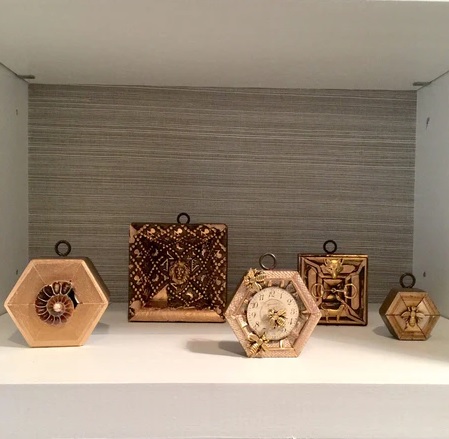
So why wait? It’s time to start collecting Museum Bees and creating your own wall of art. These little treasures are the perfect way to add some whimsy and personality to your home, and with their affordable price point, you won’t have to break the bank to do it. So go ahead, gobble them up, and enjoy the joy they bring to your space!
Pros and Cons of Decorating with Museum Bees
Like any decorative element, museum bees come with both advantages and disadvantages. Here are some of the main pros and cons:
Pros:
- Unique and eye-catching: Museum bees are a rare and interesting decorative element that is sure to catch the eye of your guests.
- Versatile: They can be used in a variety of settings and with many different styles of decor.
- Timeless: Museum bees have been used in decorative settings for over a century and are unlikely to go out of style anytime soon.
Cons:
- Expensive: High-quality museum bees can be quite expensive, especially if you’re looking for rare or antique pieces.
- Fragile: Because they are made of metal, museum bees can be prone to chipping or breaking if they are dropped or mishandled.
- Limited availability: While museum bees are becoming more popular, they are still relatively rare and can be difficult to find in certain areas.
Alternatives to Museum Bees
If museum bees aren’t quite right for your decor, here are a few alternative options:
- Other insect-inspired decorations: If you like the idea of using insects in your decor, there are many other options besides bees. Consider dragonflies, butterflies, or even spiders.
- Vintage toys: Vintage toys can add a whimsical, nostalgic touch to your decor. Look for items like tin wind-up toys or wooden pull toys.
- Repurposed objects: Get creative and repurpose everyday objects into unique decorative elements. For example, you could frame a collection of vintage keys or display old cameras on a bookshelf.
Step-by-Step Guide to Decorating with Museum Bees
Here are the steps to follow to decorate your home or business with museum bees:
- Choose your location: Decide where you want to display your bees. Consider areas that would benefit from a unique decorative element.
- Choose your bees: Determine how many bees you will need based on the size of your display area. Decide whether you want to use all one type of bee or mix and match different styles.
- Choose your display method: There are many ways to display museum bees, including:
- Framing them in a shadow box
- Attaching them to a wall or ceiling with adhesive putty
- Displaying them in a glass cloche or dome
- Arranging them on a tray or other flat surface
- Arrange your bees: Once you have your bees and your display method, it’s time to arrange them. Play around with different configurations until you find one that you like.
- Enjoy your new decor: Sit back and enjoy your newly decorated space!
Comparing Museum Bees to Other Decorative Elements
Here’s how museum bees stack up against some other common decorative elements:
Museum Bees vs. Houseplants
- Pros of museum bees: Don’t require watering or special care, unique and eye-catching.
- Pros of houseplants: Help purify the air, can be used to create a calming atmosphere.
Museum Bees vs. Artwork
- Pros of museumbees: More affordable than many pieces of artwork, can add a unique touch to your decor.
- Pros of artwork: Can be a more substantial focal point in a room, can express personal style or reflect the theme of a space.
Museum Bees vs. Sculptures
- Pros of museum bees: Smaller and more versatile than many sculptures, often less expensive.
- Pros of sculptures: Can add a three-dimensional element to your decor, can serve as a focal point in a room.
Tips for Decorating with Museum Bees
Here are some tips to keep in mind when decorating with museum bees:
- Mix and match different styles of bees for a more eclectic look.
- Choose a display method that will protect your bees from damage and dust.
- Consider using museum bees in unexpected ways, such as attaching them to lampshades or incorporating them into a piece of furniture.
- Don’t overdo it – too many bees can overwhelm a space.
- If you’re on a budget, consider purchasing replicas instead of antique bees.
The Best Places to Buy Museum Bees
If you’re ready to purchase museum bees for your decor, here are some of the best places to buy them:
- Etsy: This online marketplace has a wide variety of vintage and antique museum bees available from sellers around the world.
- Ruby Lane: Another online retailer specializing in vintage and antique items, including museum bees.
- Antique stores: Visit your local antique stores to see if they have any museum bees available.
- Auctions: Check local auction houses to see if they have any upcoming sales featuring museum bees.
In conclusion, museum bees are a unique and interesting decorative element that can add a touch of whimsy and elegance to any space. Whether you’re a fan of vintage or modern decor, there’s a place for museum bees in your home or business. Use the tips and advice provided in this article to help you choose and display your bees, and enjoy the beauty and charm they add to your space.
FAQs
- What are some common materials used to make museum bees?
- Museum bees are often made of brass or bronze, but can also be found in other metals like copper or silver.
- Can museum bees be used outside?
- While it’s possible to use museum bees outside, they may tarnish or corrode if exposed to the elements for an extended period of time.
- Are there any special care instructions for museum bees?
- To keep your museum bees looking their best, wipe them down with a soft cloth regularly to remove dust and fingerprints.
- Can museum bees be painted or customized?
- Yes, museum bees can be customized with paint or other embellishments if desired.
- How do I know if I’m buying an authentic antique museum bee?
- Look for signs of wear or patina that would be difficult to replicate on a new piece. Additionally, consider purchasing from a reputable dealer or auction house to ensure authenticity.
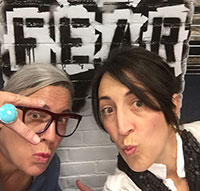
We’re Emma Carole Paradis and Kimberly Carole, the owners and designers of Impeccable Nest, based in Bedford, New Hampshire. A mother-daughter team with a love of design. Originally from Manhattan Beach, California, now based in Bedford, New Hampshire, we bring a Southern California cool and New England tradition to our design. Not only do we work together…we also live together in a multi-generational home…and a home that they are known to design for others.
